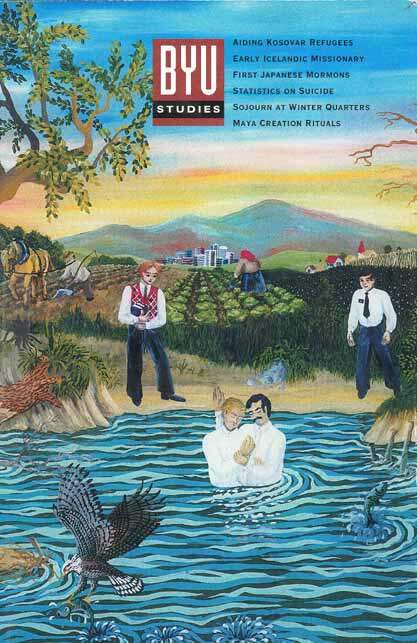C. S. Lewis
The Man and His Message
Book Notice
-
By
Bruce W. Young,
C. S. Lewis: The Man and His Message, edited by Andrew C. Skinner and Robert L. Millet (Bookcraft, 1999)
C. S. Lewis: The Man and His Message presents eleven of the fourteen addresses given at the December 1998 Brigham Young University conference commemorating the hundredth anniversary of C. S. Lewis’s birth. These strong and diverse essays are valuable for both newcomers and confirmed Lewis enthusiasts.
The point of The Man and His Message is explicitly “not to canonize C. S. Lewis, but to appreciate him” (157), and the authors carefully avoid “contorting” him into a Latter-day Saint (4). They spend little time comparing Lewis’s thought and LDS doctrine, yet the connections between Lewis and the restored gospel are constantly implied, and several essayists argue that Lewis, despite his lack of prophetic authority, can serve Latter-day Saints as a source of insight and as an example of Christian discipleship.
Elder Neal A. Maxwell’s essay sets the tone of the volume by emphasizing that Lewis’s value for Latter-day Saints lies in his Christian discipleship rather than in his doctrinal writings. Several contributors take a similar approach: Terrance D. Olson examines self-deception and its impact on family, Brent L. Top movingly discusses affliction, Andrew C. Skinner writes on temptation, and Daniel K. Judd powerfully addresses the predicament of self-love and the way—by offering ourselves to Christ—we can become our true selves. Also relevant to daily discipleship, but set in a firm doctrinal context, is Robert L. Millet’s masterful essay on the “transformation of human nature.” Millet comments on passages from Lewis about the need for personal change and the hope Christ offers us of becoming like Him.
Other essays cover less familiar ground, such as John S. Tanner’s brilliant essay comparing Lewis’s and Milton’s depiction of the “psychology of temptation” and Paul E. Kerry’s discussion of Lewis’s important but relatively unfamiliar writings from the 1930s. Another unusual and stimulating essay is Brent D. Slife’s discussion of Lewis’s move from viewing truth as abstract and passive to viewing it as personal, concrete, and active, as embodied in Jesus Christ.
Understandably, the book pays little attention to Lewis as a literary critic, scholar, or imaginative writer. Though some of his fiction is discussed, the essays contain only brief references to The Chronicles of Narnia and none at all to Till We Have Faces, which Lewis considered his best work of fiction and which has profound relevance to his thought on discipleship and personal transformation. Most quoted and referred to are Lewis’s autobiographical and theological works and those imaginative works, such as Screwtape Letters and The Great Divorce, that are most transparently theological.
Despite a few errors—“comic sadist” on page 165 should read “cosmic sadist”; George MacDonald, whom Lewis never met, is described as Lewis’s “old friend and mentor” (132); and Ransom, a philologist in Lewis’s science fiction trilogy, is called a “scientist” (43)—the essays generally display a solid understanding of Lewis’s life and thought. At their best, they give penetrating expression to Lewis’s central ideas and introduce readers to new and stimulating avenues of exploration. Even more importantly, by connecting his insights with the daily realities of gospel living, the book presents Lewis as a source of encouragement and practical help.
Notes
- Fire on Ice: The Conversion and Life of Gudmundur Gudmundsson
- Tomizo and Tokujiro: The First Japanese Mormons
- “Pleasing to the Eyes of an Exile”: The Latter-day Saint Sojourn at Winter Quarters, 1846–1848
- The Dance of First Beginnings: Contemporary Maya Creation Rituals in a World Context
- Statistics on Suicide and LDS Church Involvement in Males Age 15–34
Articles
- Mourn with Those That Mourn . . . Comfort Those That Stand in Need of Comfort: Dean Byrd’s Diary of the Kosovar Refugee Camps
- New Photographs of Wilford Woodruff’s Trip to Alaska, 1895
Documents
- Three Reviews of Mormon America: The Power and the Promise
- What E’er Thou Art, Act Well Thy Part: The Missionary Diaries of David O. McKay
- Fawn McKay Brodie: A Biographer’s Life
- Out of the Black Patch: The Autobiography of Effie Marquess Carmack, Folk Musician, Artist, and Writer
- Confronting the Myth of Self-Esteem: Twelve Keys to Finding Peace
Reviews
- The Journals of George Q. Cannon, Volume I: To California in ’49
- The Temple in Time and Eternity; The Gate of Heaven
- Understanding Isaiah
- C. S. Lewis: The Man and His Message
Book Notices
Purchase this Issue
Share This Article With Someone
Share This Article With Someone


